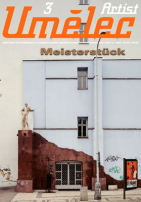| Umělec magazine 1999/3 >> Seven Theses on the Crisis of Czech Art | List of all editions. | ||||||||||||
|
|||||||||||||
Seven Theses on the Crisis of Czech ArtUmělec magazine 1999/301.03.1999 Tomáš Pospiszyl | opinions | en cs |
|||||||||||||
|
"1. The current crisis is manifested by the fact that the Czech Republic has produced a very limited number of strong and interesting works of art in recent years.
2. It is imperative to realize that this crisis is not exclusively derived from the conditions in the general society and economic hardships but it arises from the very situation in the arts. 3. Self-complacency is the prevailing attitude among Czech artists and critics. Those who are aware of the crisis tend to put blame on the art „operations“, the state, galleries, and Western art instead of looking for it in one’s own work. 4. There is no critical platform in Czech art; there is no critical language that could be used on polemics. For this reason, disunion of opinion on the issues of a number of elementary values of Czech art prevails. There appears to be lack of ability to support good artistic achievements in earnest and with arguments and to ruthlessly point at the poor ones. 5. Art is not able to convince society of its importance. There is no critical number of audience following contemporary art. This is also why the states’ interest in supporting visual arts is so low and this is also why political and financial support going to the arts is non-existent. Initiative in those issues, however, must come from the artists, critics and staff of art institutions themselves. This is also the reason for deep misunderstanding of even classical modernist values among general public and sometimes also among intellectual elite. 6. Czech art is not sufficiently open to external and internal impulses, mainly from view of art’s internal form. For example: none of the five artists that recently worked with large billboards employed text and photography; the artists merely enlarged their paintings to the required measurements. Very little distinct architecture is being made in the Czech Republic; there are a very low number of public commissions of art works. 7. Art community is non-existent, there are no arts associations, which could lobby in favor of arts using their respect or convince the audience and the state of the need for art using their authority. Czech art community is amazingly disintegrated and brawling. This is why every other person is a director; this is the reason for such large number of state-funded exhibition spaces, which fight for the same money, the same spaces and the same artists. There are no alternative galleries run by artists themselves. "
01.03.1999
Recommended articles
|
|||||||||||||





Comments
There are currently no comments.Add new comment